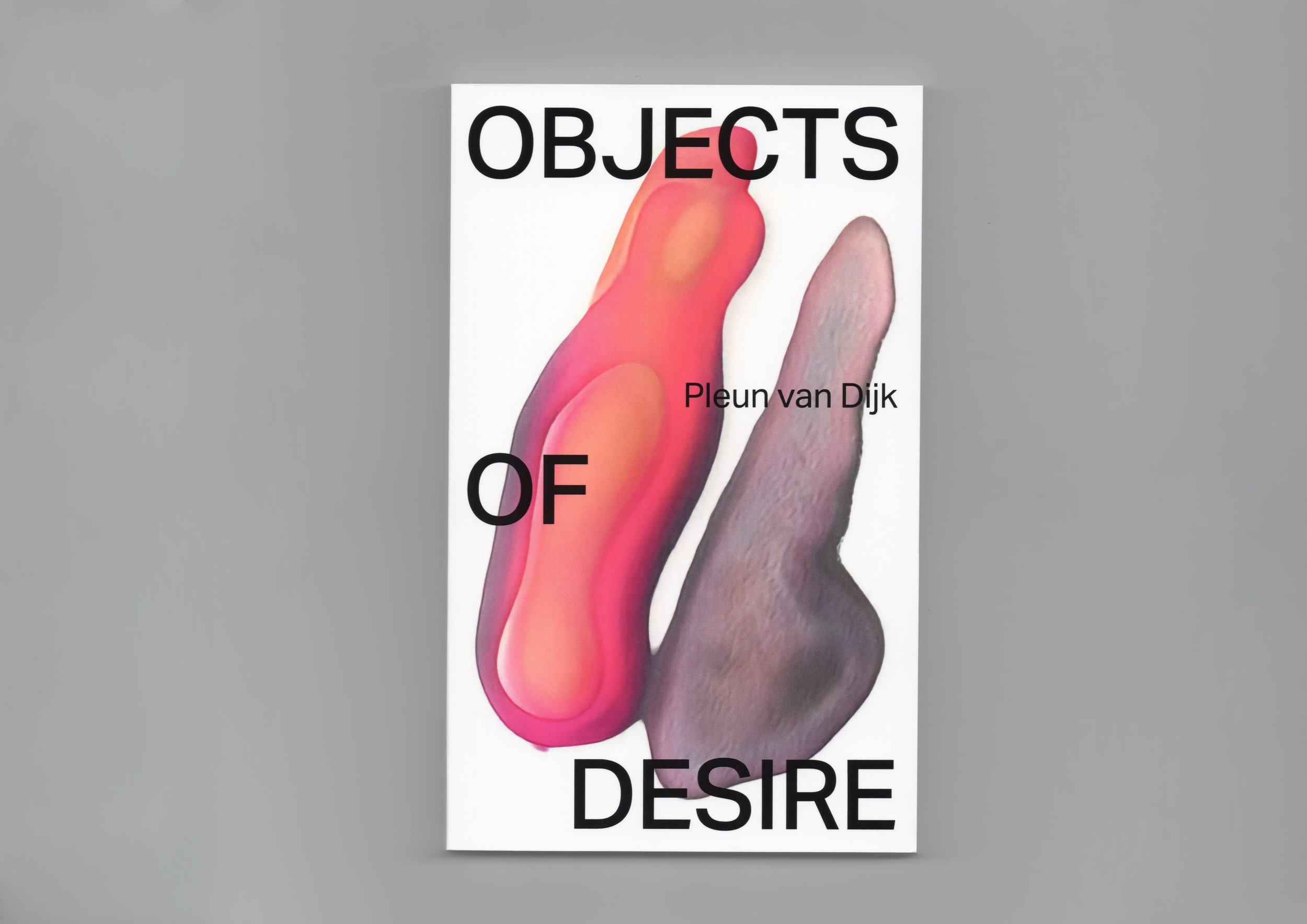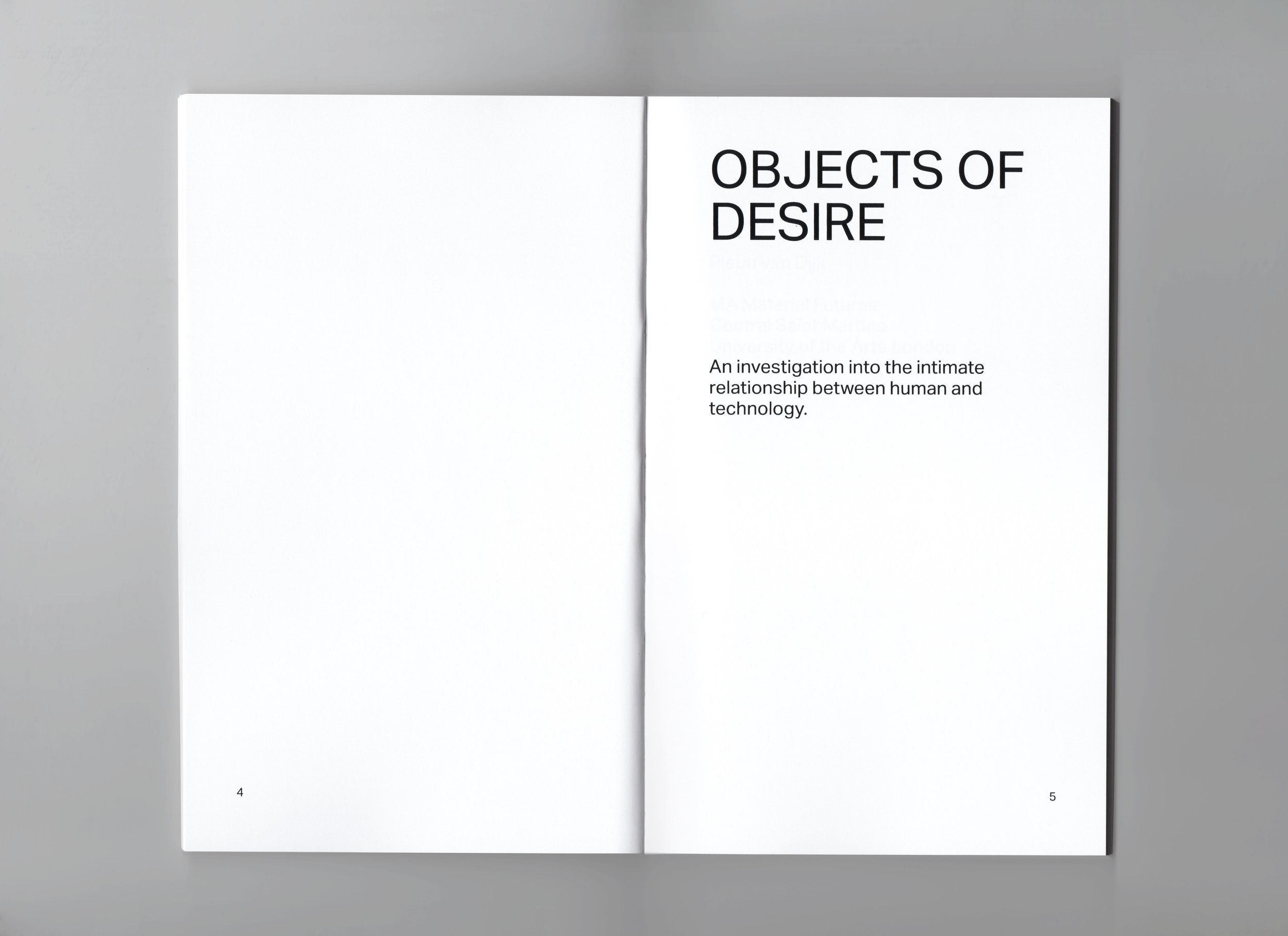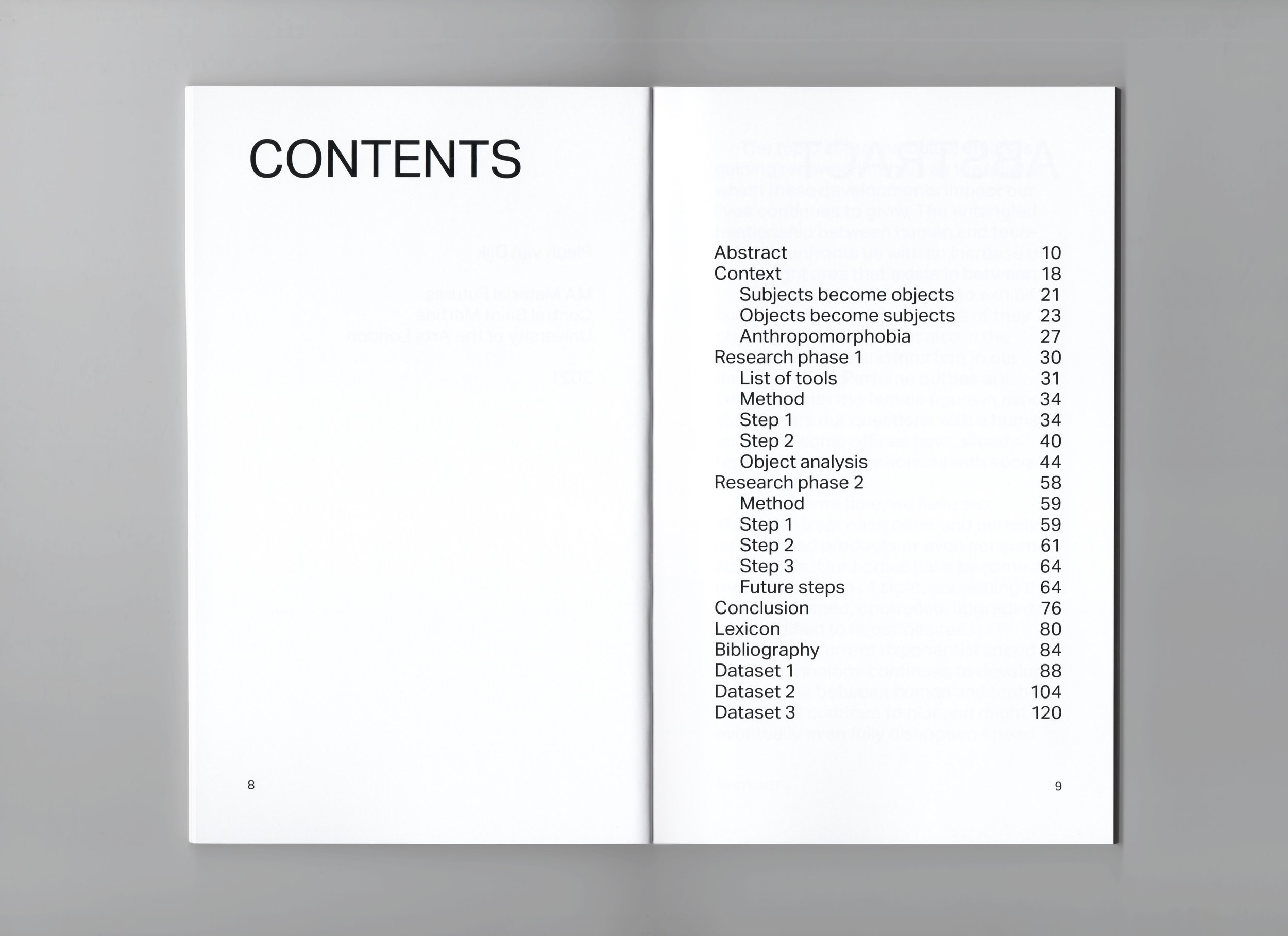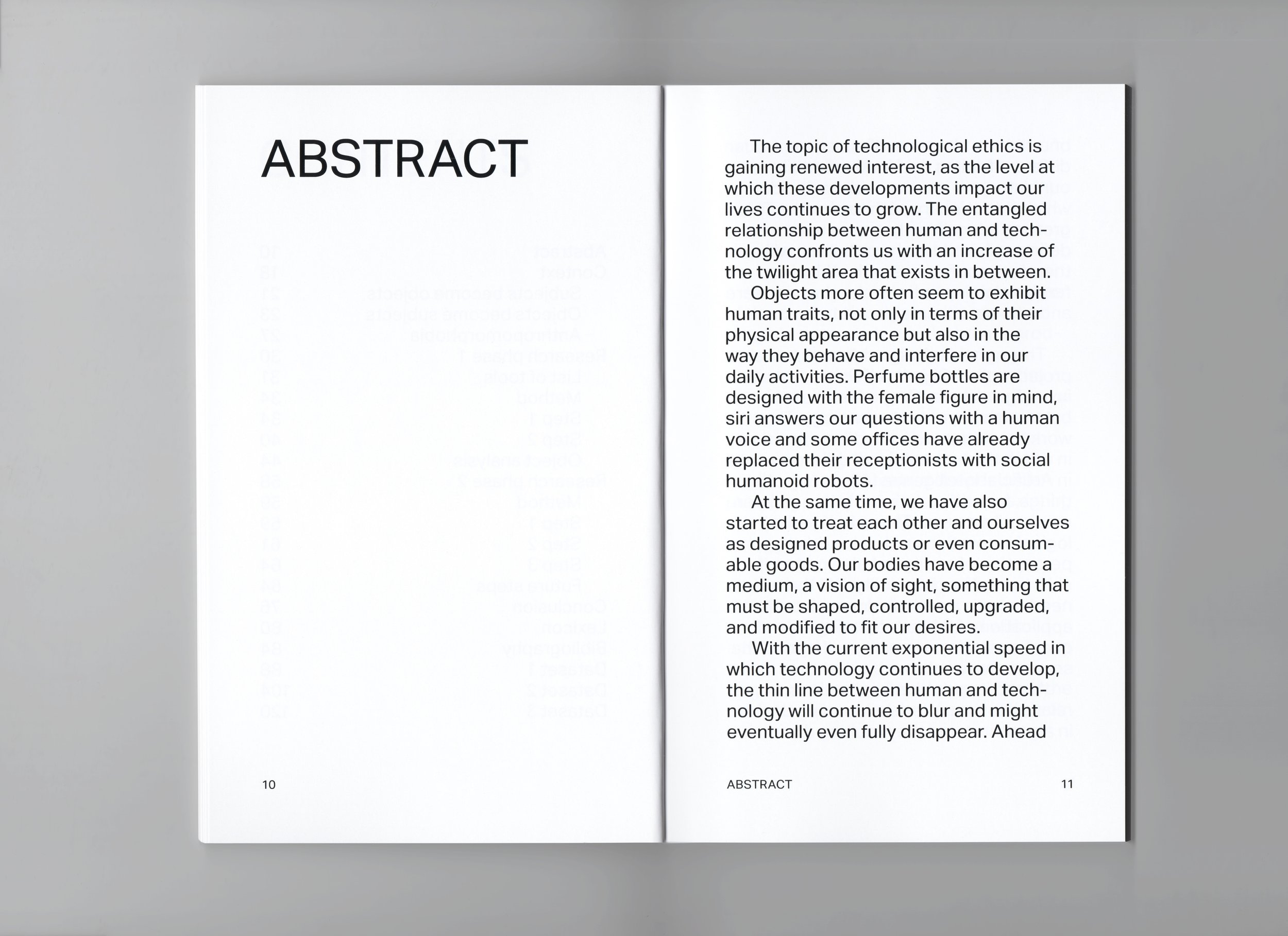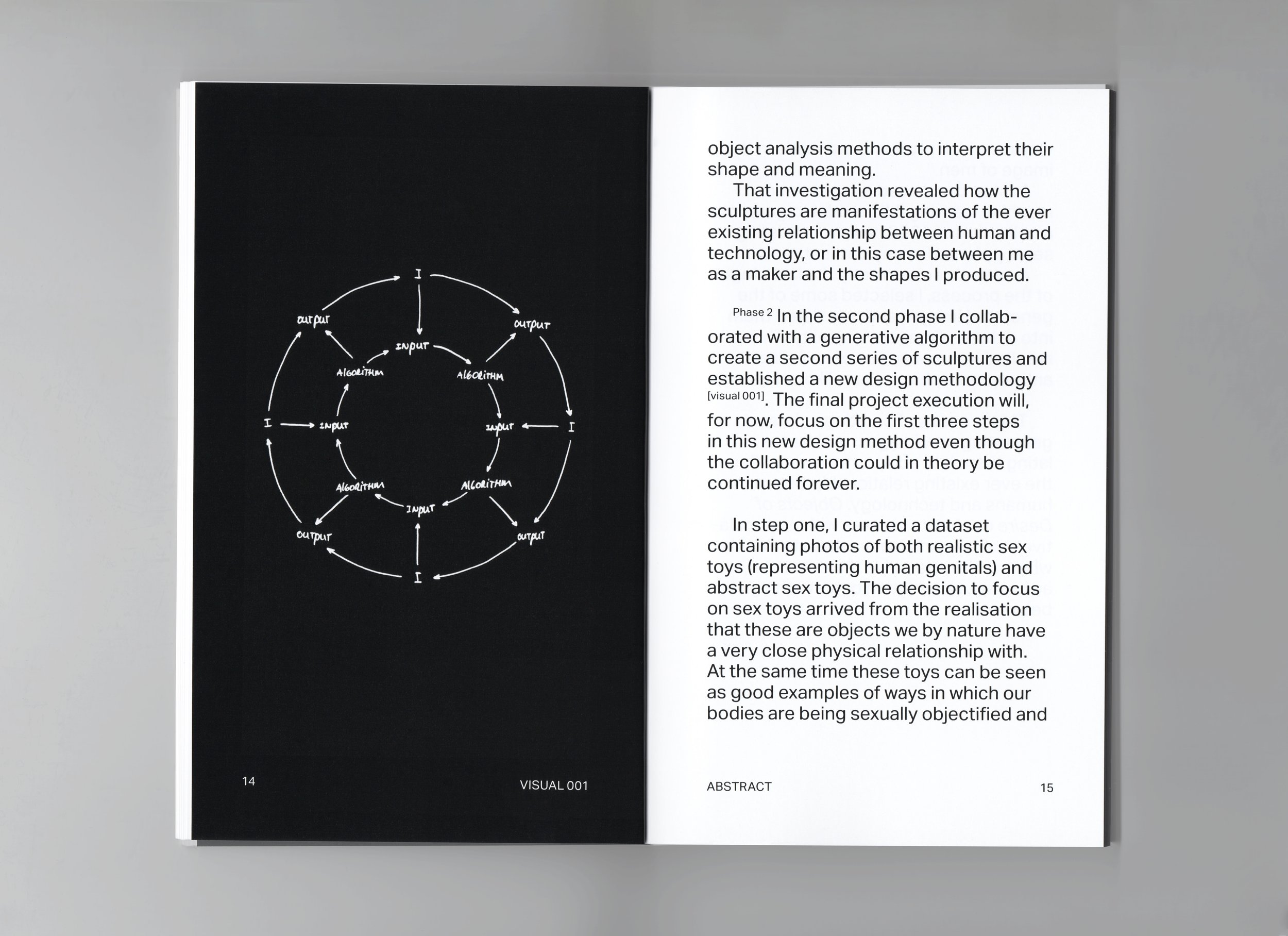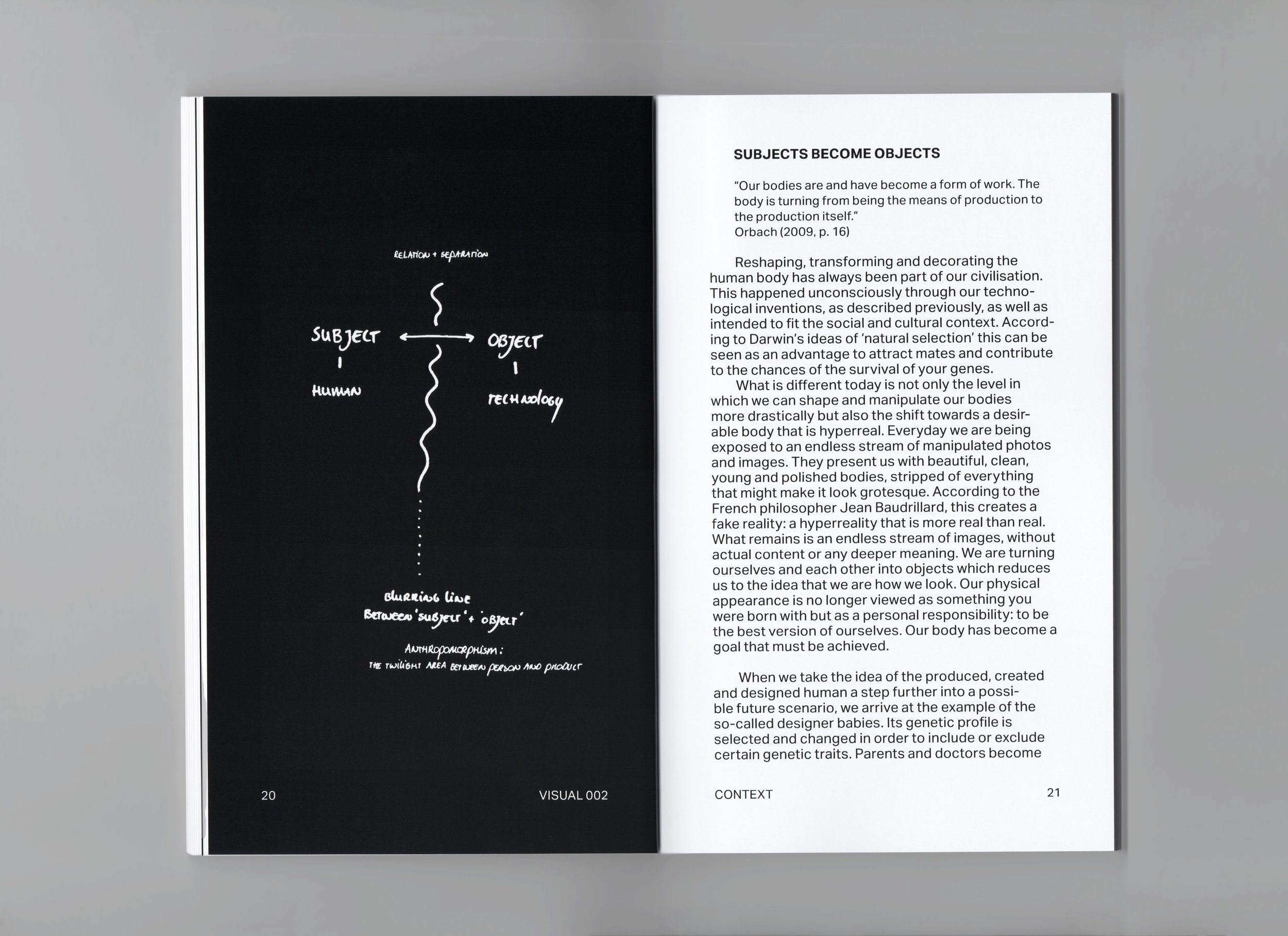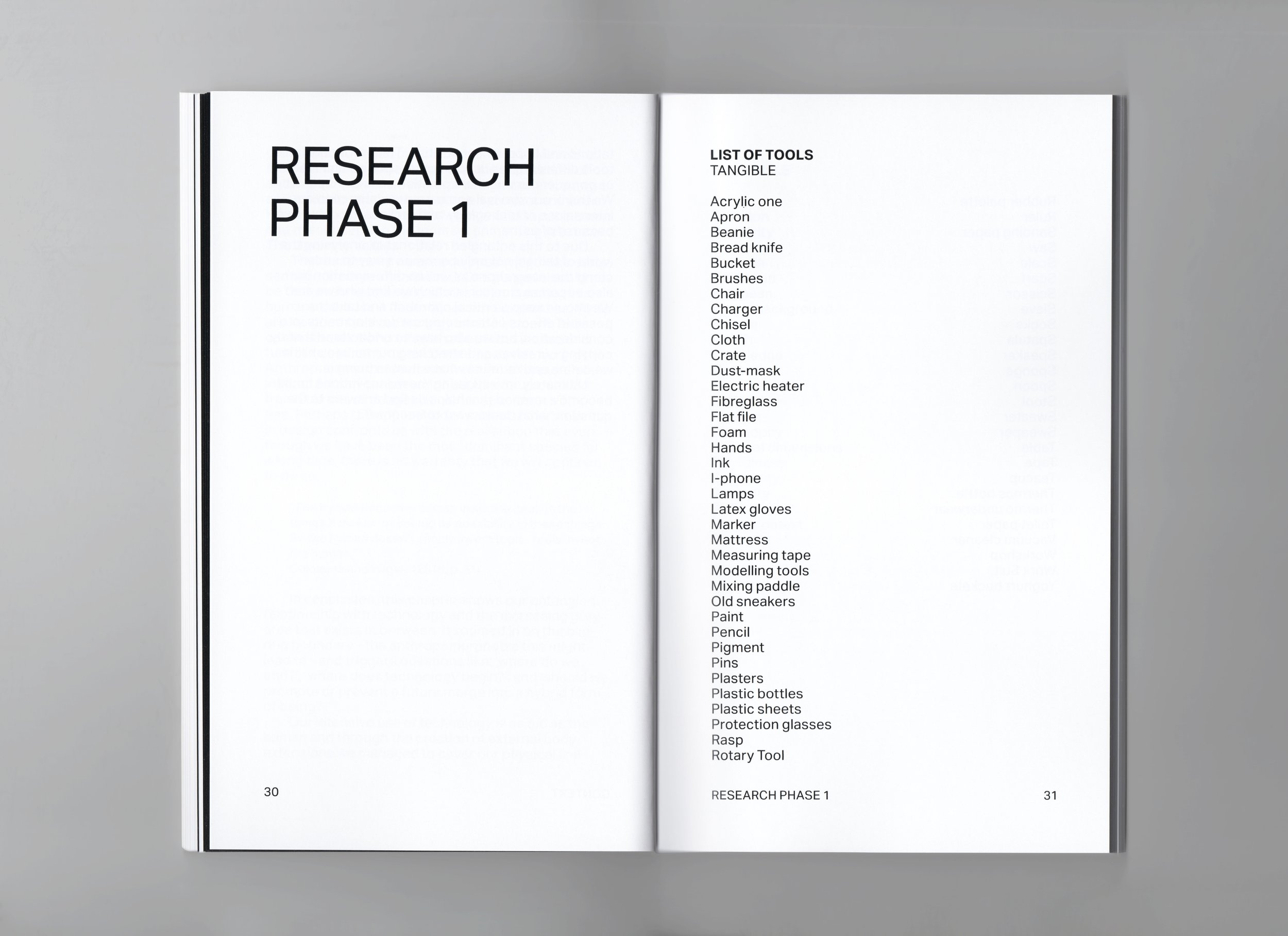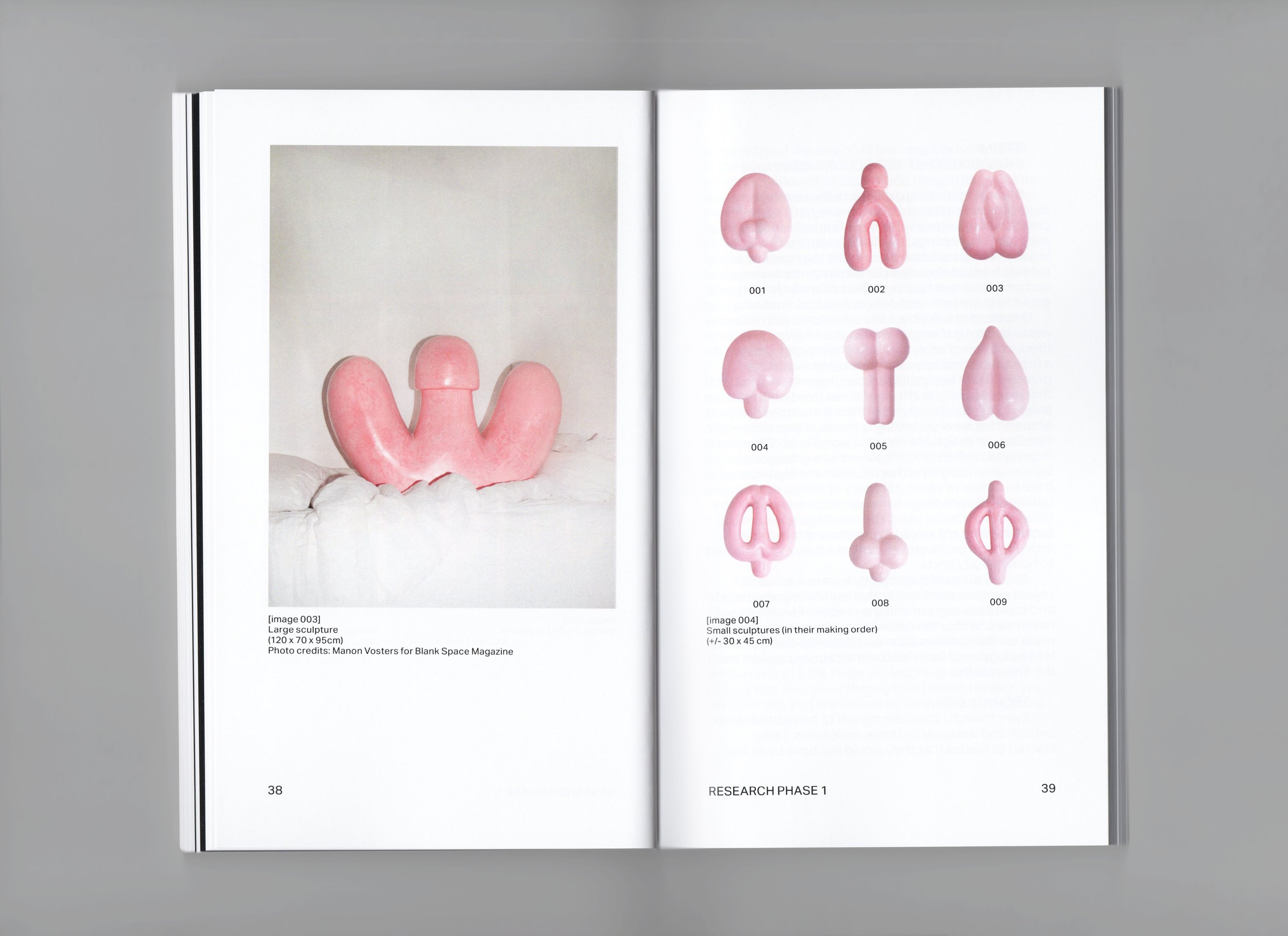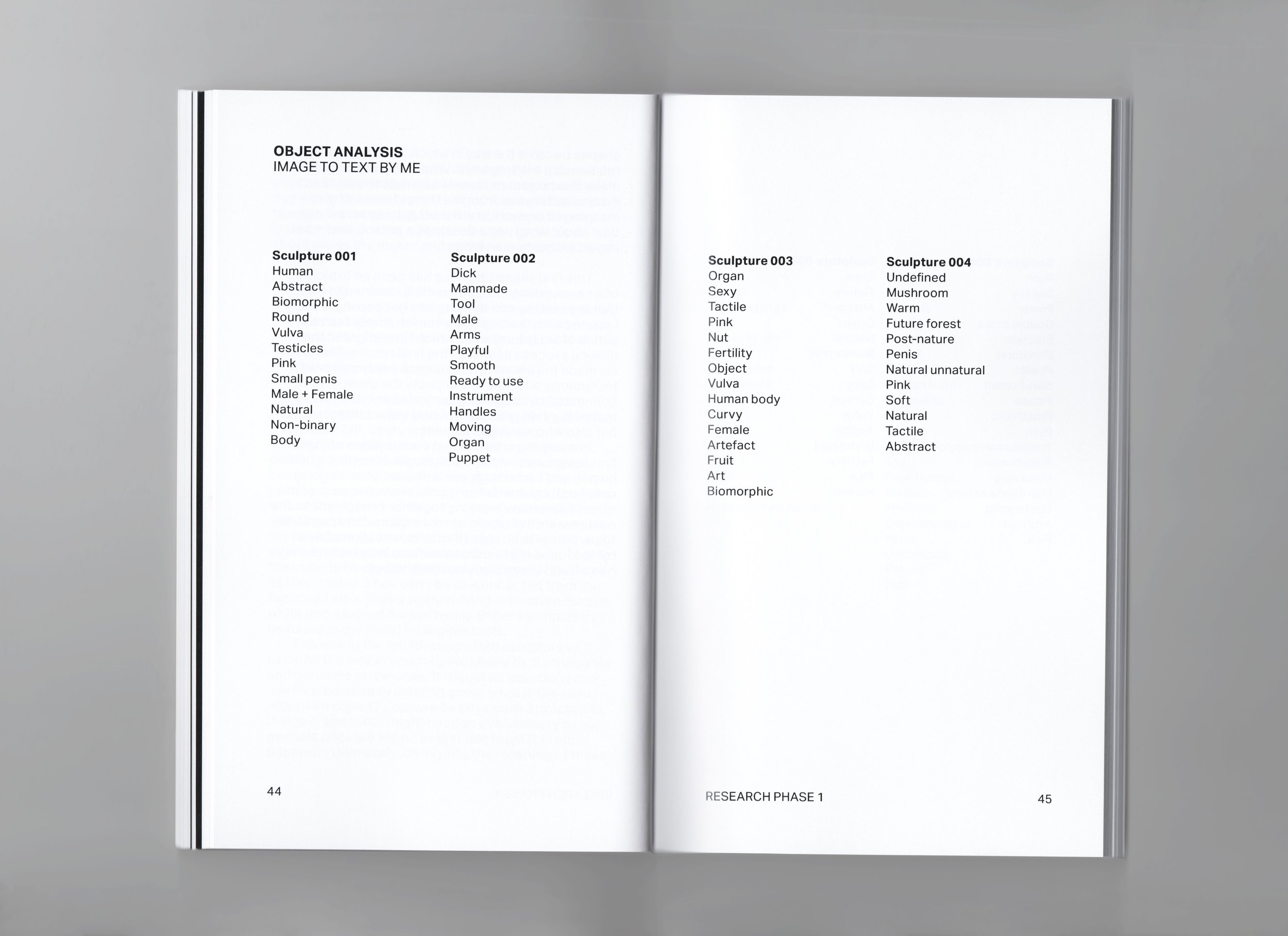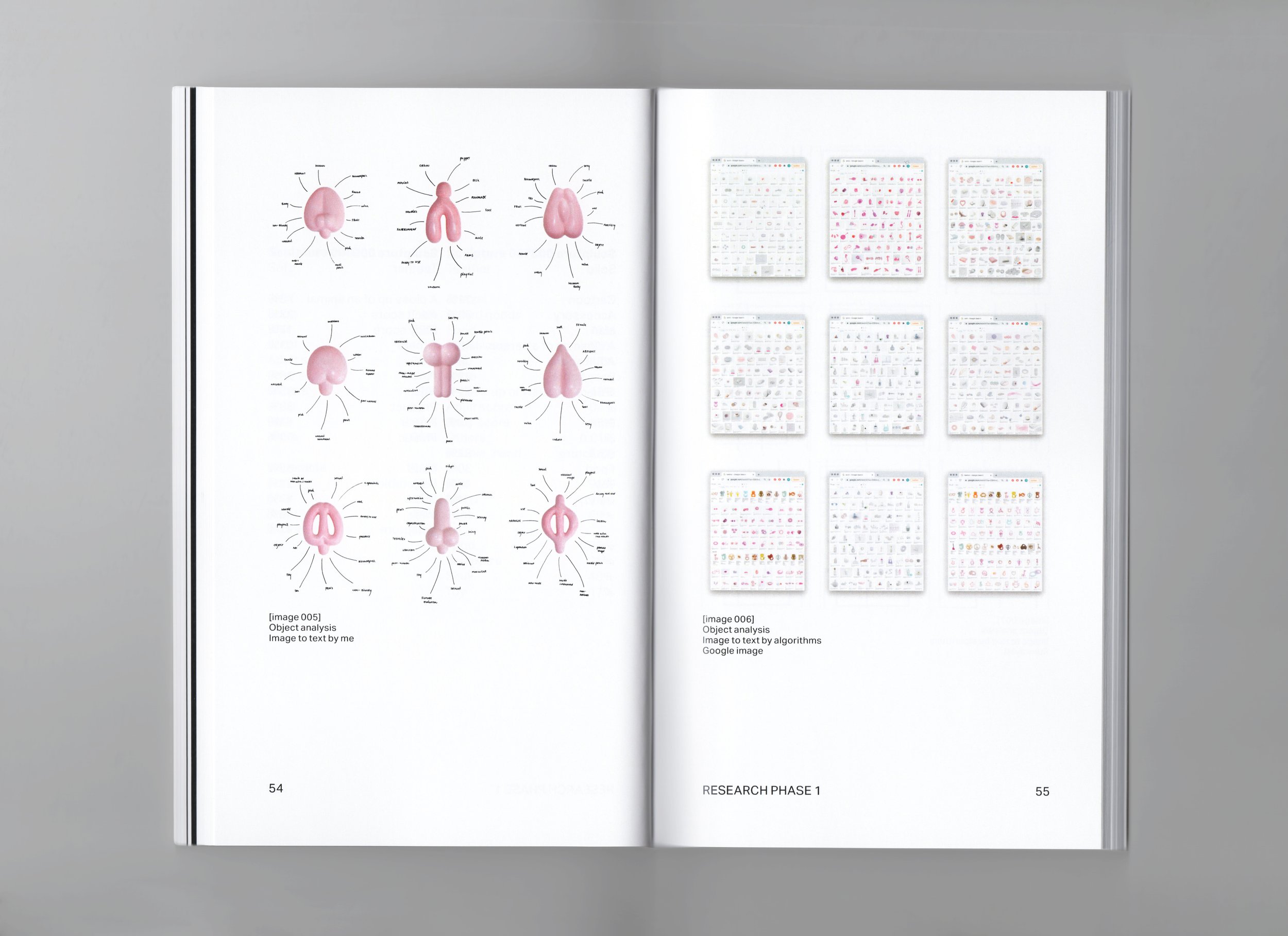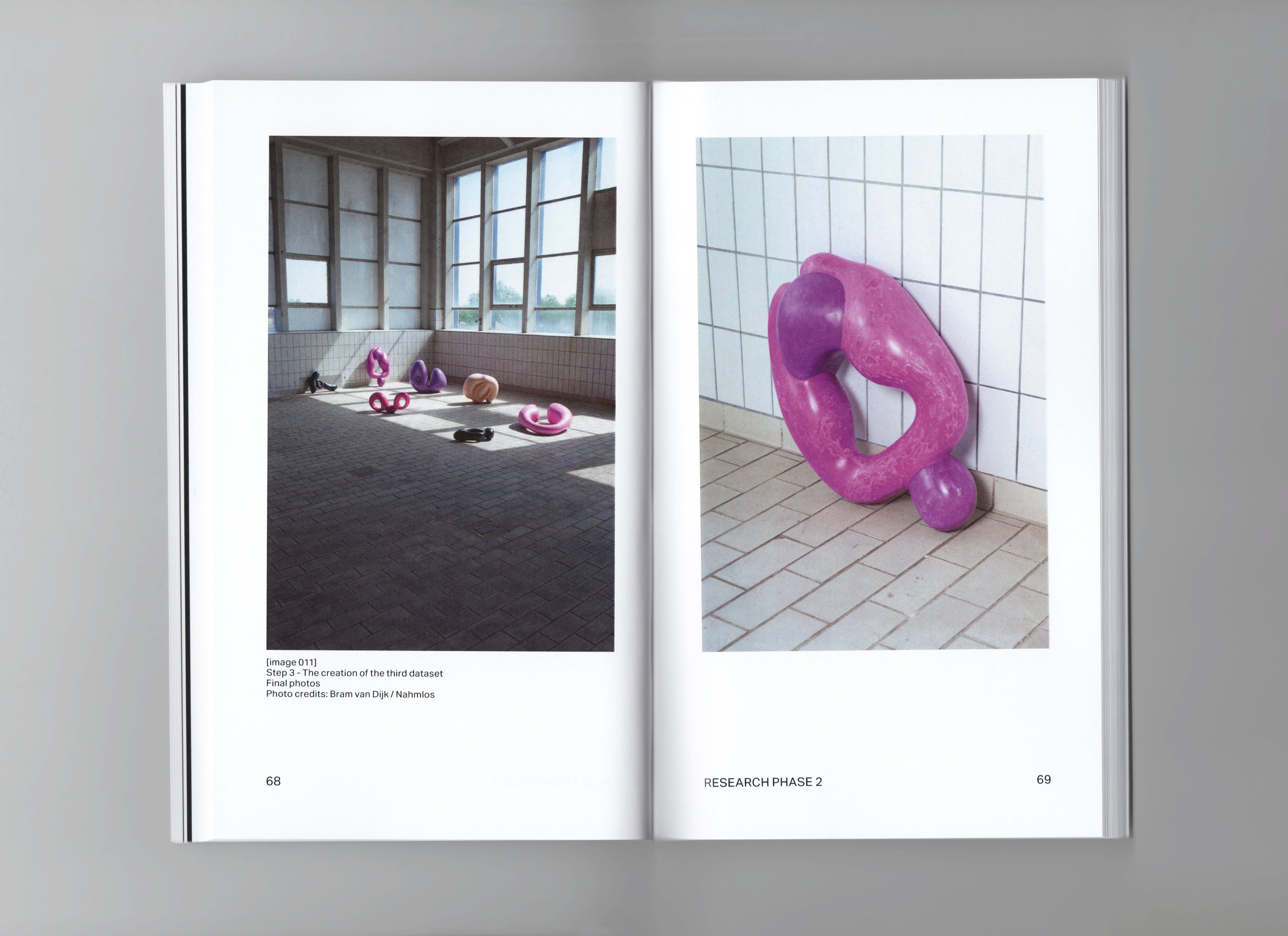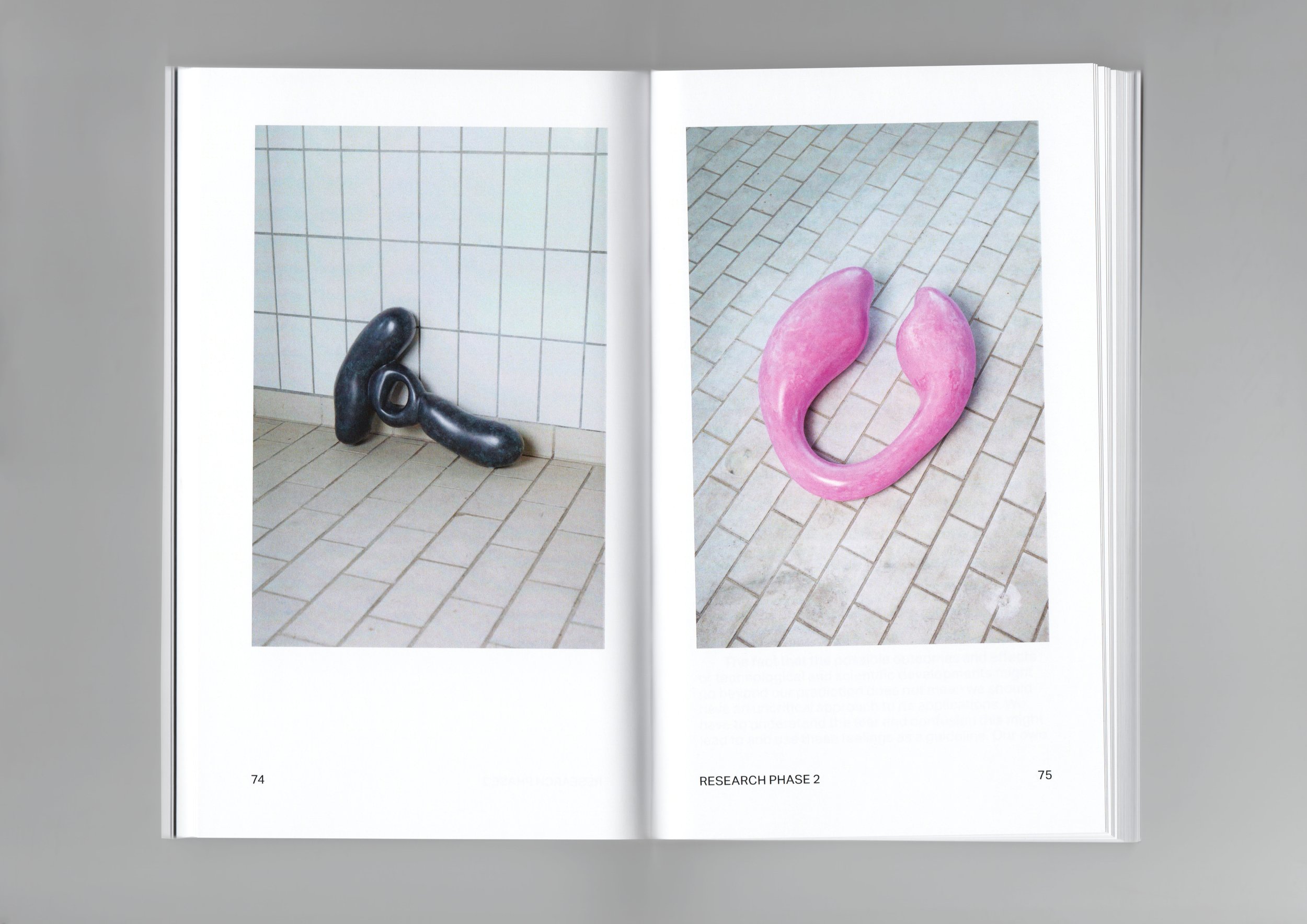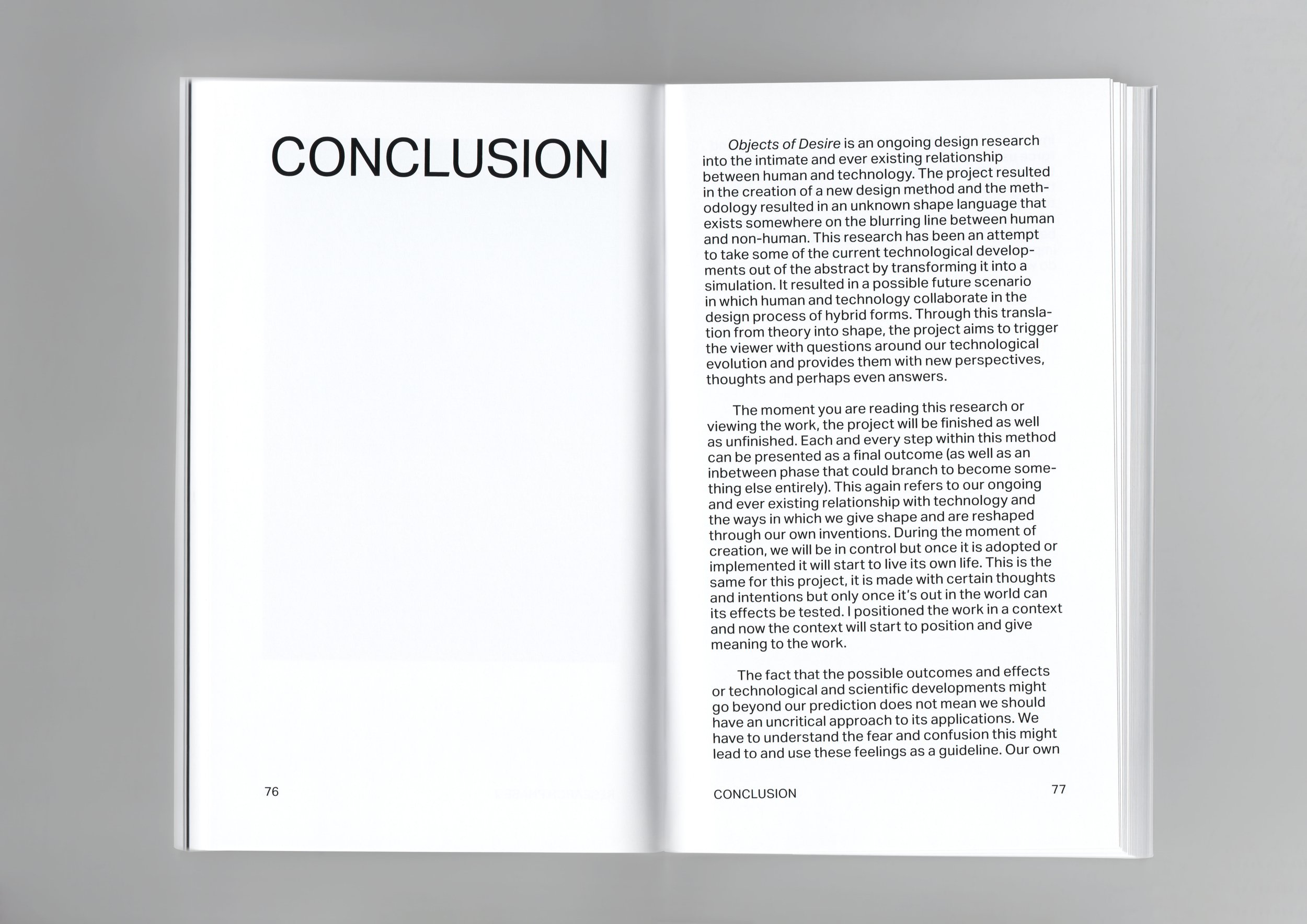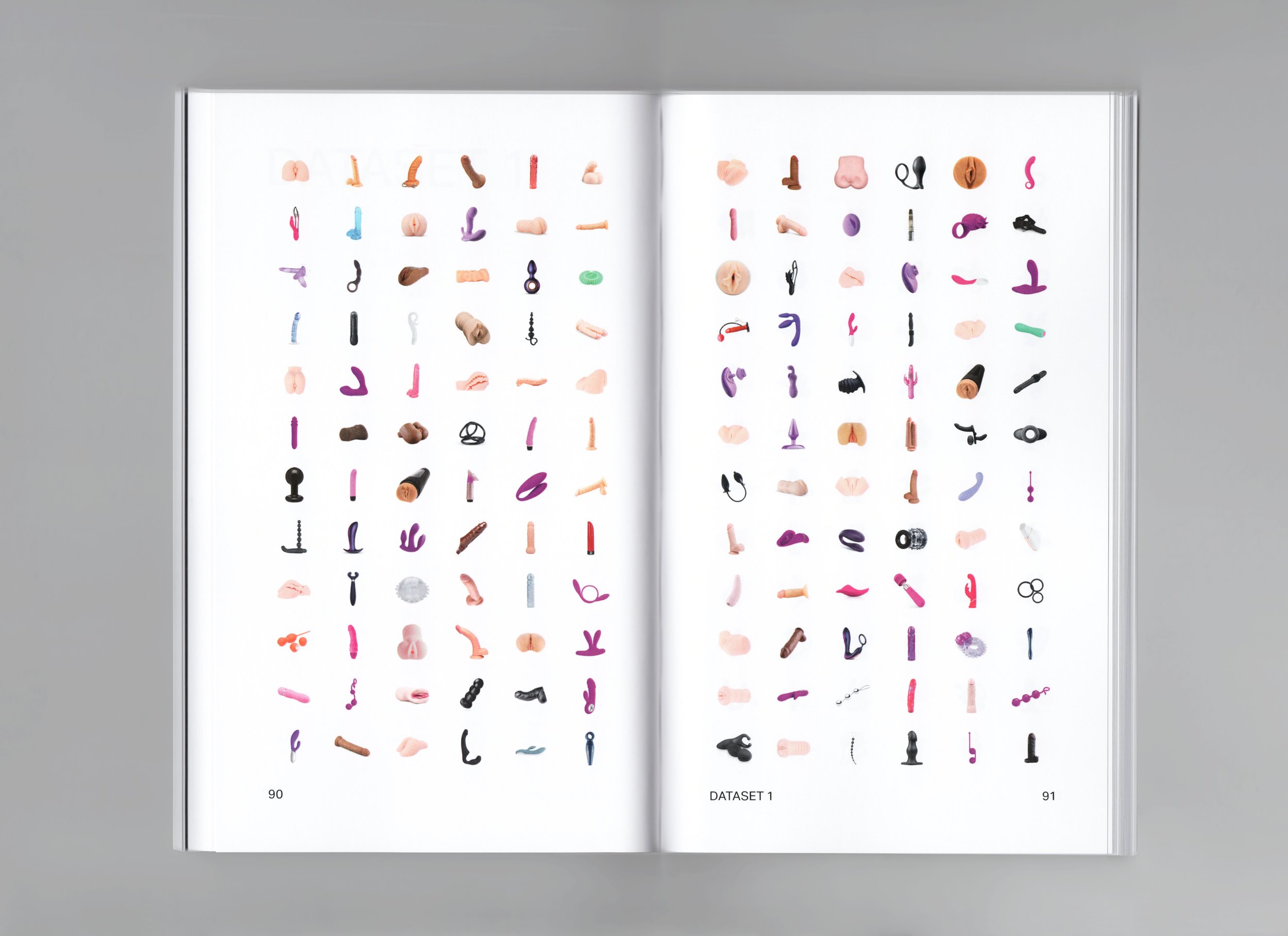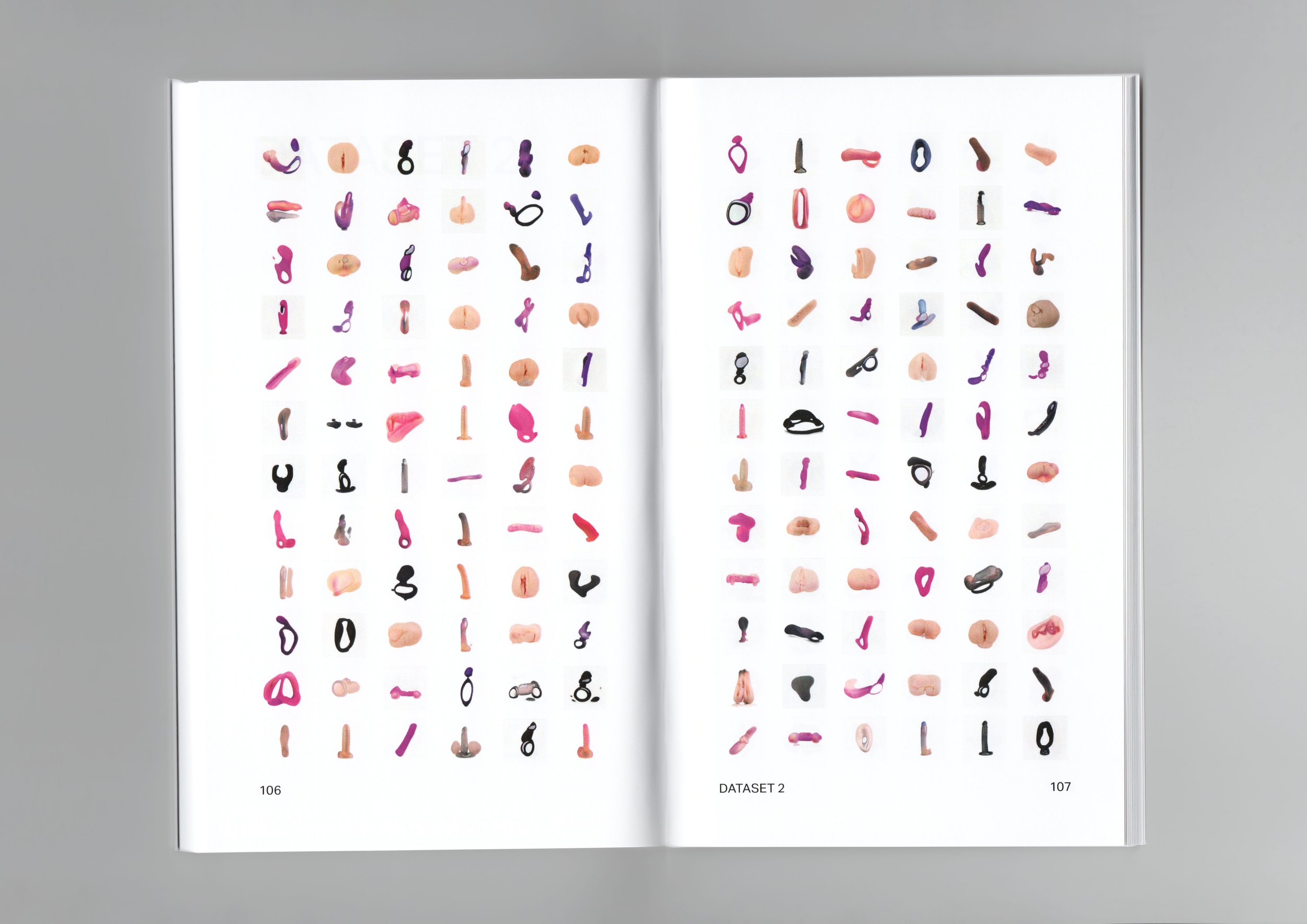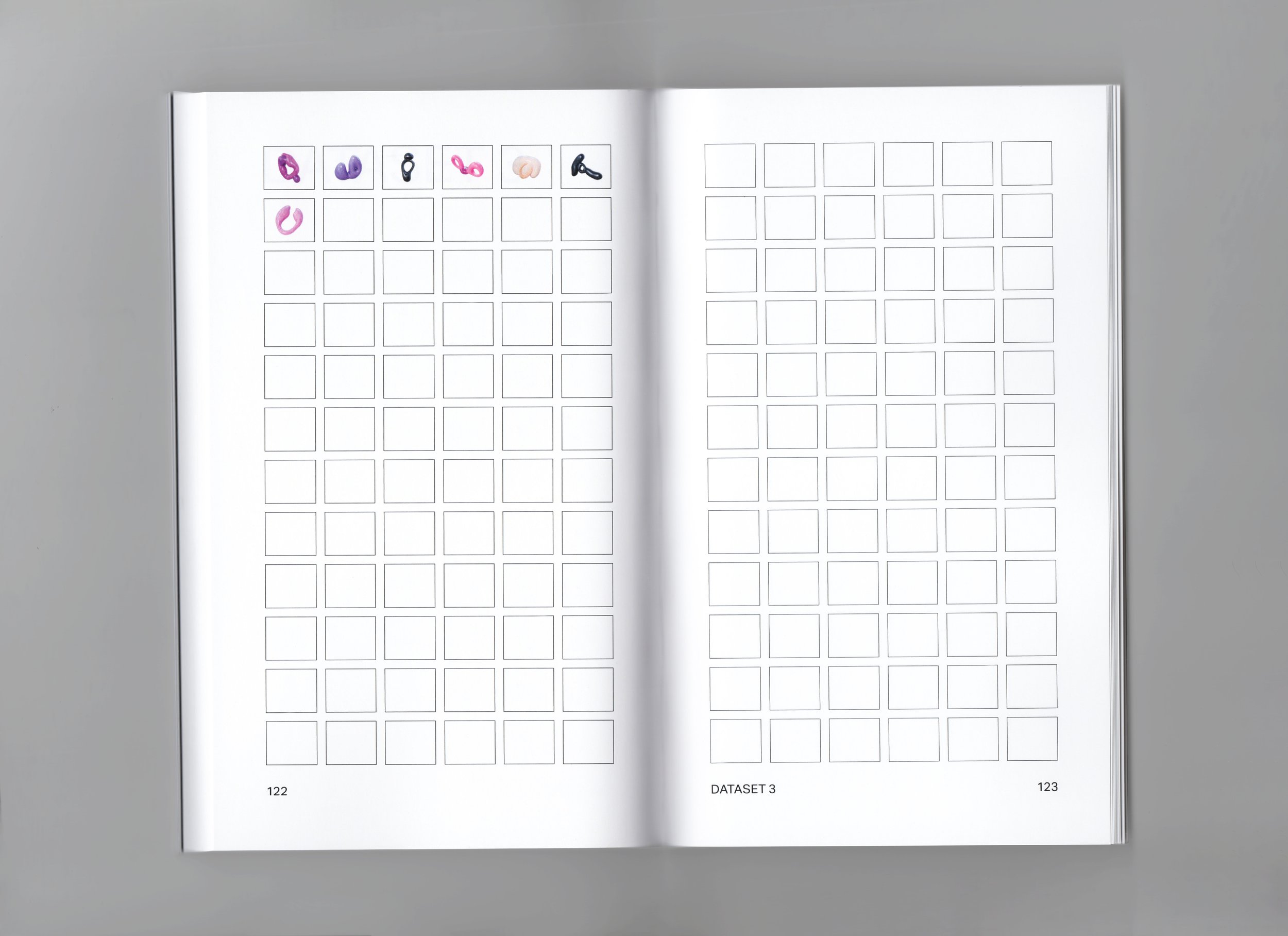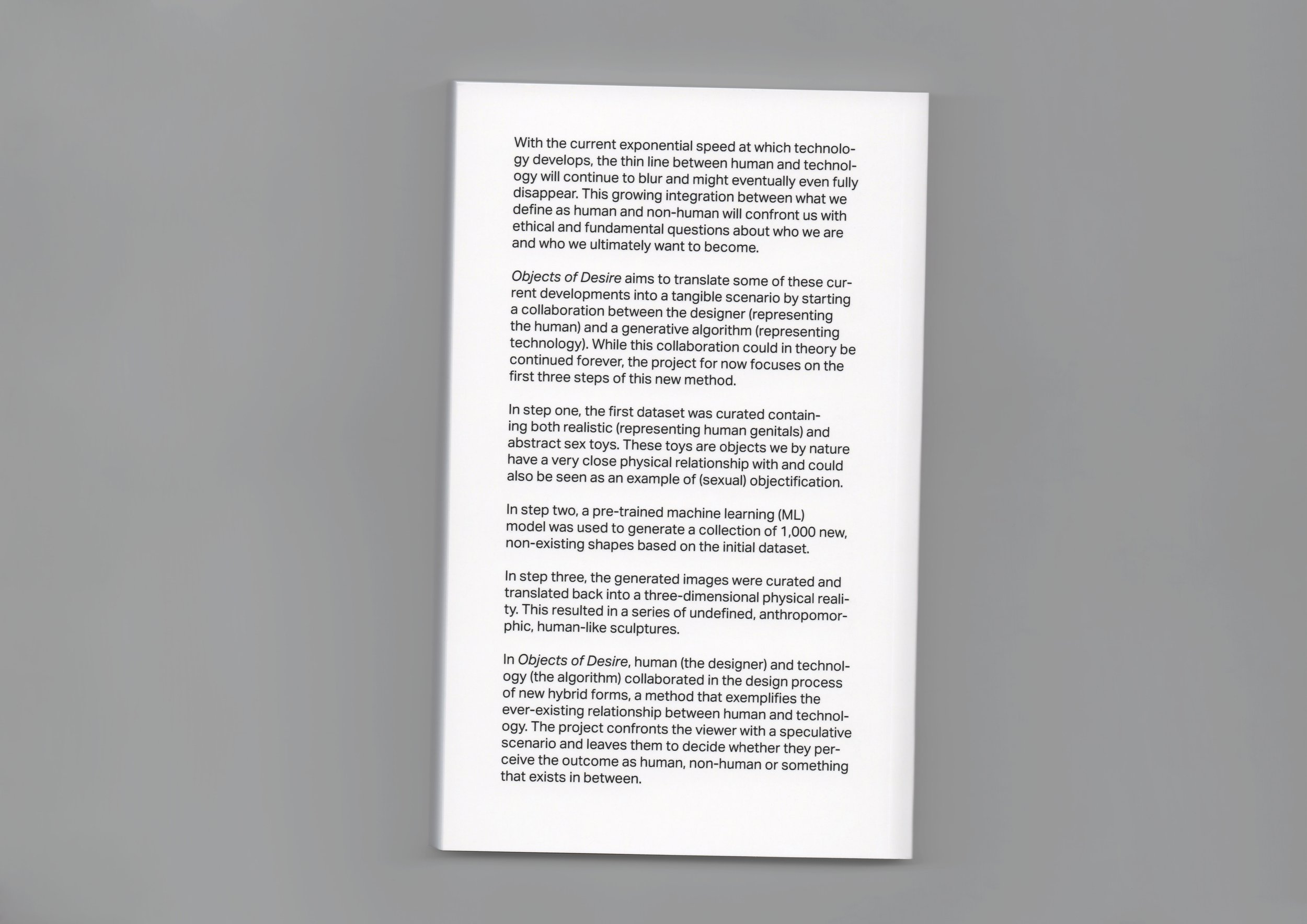€32,00 buy now
OBJECTS OF DESIRE - THESIS
ABSTRACT
The topic of technological ethics is gaining renewed interest, as the level at which these developments impact our lives continues to grow. The entangled relationship between human and technology confronts us with an increase of the twilight area that exists in between.
Objects more often seem to exhibit human traits, not only in terms of their physical appearance but also in the way they behave and interfere in our daily activities. Perfume bottles are designed with the female figure in mind, Siri answers our questions with a human voice and some offices have already replaced their receptionists with social humanoid robots.
At the same time, we have also started to treat each other and ourselves as designed products or even consumable goods. Our bodies have become a medium, a vision of sight, something that must be shaped, controlled, upgraded, and modified to fit our desires.
With the current exponential speed at which technology continues to develop, the thin line between human and technology will continue to blur and might eventually even fully disappear. Ahead of us lies an almost endless amount of different futures and for the first time in our history, we are the ones to decide which evolutionary path to choose. This growing integration between what we define as human and non-human will therefore confront us with ethical and fundamental questions about who we are and who we ultimately want to become.
Through this design-driven research project called Objects of Desire, Pleun aims to investigate the entangled relationship between human and technology. The work is positioned in the current context in which the technological developments in Artificial Intelligence (AI) among other things, turn this relationship into an even more intimate one. The use of technological innovations not only adds to our perception of reality but also makes it shift towards a new reality. We, therefore, need to have a critical approach to the application of these technologies and question if this new reality will lead to the scenario we want. AI and its possible implications, in relation to examples surrounding the bias in algorithms and the resulting discrimination, are part of the current studies and rational debates in which mainly experts consider the ethics around these innovations. However, it is crucial that the viewer too can engage in these discussions as it will also impact their lives.
In this project, Pleun aims to translate some of the current developments into a tangible scenario in which she creates products that literally embody the merge of human and technology, through the approach of a Design Researcher. By doing so, she not only wants to provide the viewer with a different perspective on the new reality this future merge might lead to but also create a deeper understanding of the intimate and ever-existing relationship between human and technology.
Objects of Desire consists of two different research phases:
Phase 1 - The first phase started with a thinking-through-making approach which resulted in the creation of one large and nine small sculptures. Once the sculptures were finished different object analysis methods were used to interpret their shape and meaning.
That investigation revealed how the sculptures are manifestations of the ever-existing relationship between human and technology, or in this case between Pleun as a maker and the shapes she produced.
Phase 2 - In the second phase she collaborated with a generative algorithm to create a second series of sculptures and established a new design methodology. The final project execution will, for now, focus on the first three steps in this new design method even though the collaboration could in theory be continued forever.
In step one, she curated a dataset containing photos of both realistic sex toys (representing human genitals) and abstract sex toys. The decision to focus on sex toys arrived from the realisation that these are objects we by nature have a very close physical relationship with. At the same time, these toys can be seen as good examples of ways in which our bodies are being sexually objectified and ways in which products are made in the image of men.
In step two, she used a pre-trained machine learning (ML) model to generate a collection of 1000 new, non-existing sex toys based on my dataset.
In step three, currently, the last stage of the process, she selected some of the generated images and translated them into a three-dimensional reality. This resulted in a new series of undefined, anthropomorphic, human-like sculptures.
Photo credits (first photo): Manon Vosters for Blank Space Magazine
Photo credits (other photos): Nahmlos
MORPH
Exhibition ‘We couldn’t find the door’ at Fey Castle with Morph collective.
Photo credits: Romain Darnaud
Contact | info@pleunvandijk.com
IG | @p_l_e_u_n
LinkedIn | Pleun van Dijk
©pleun van dijk 2023

